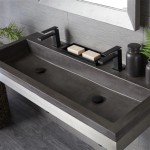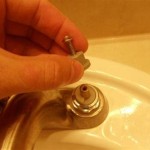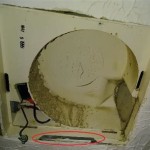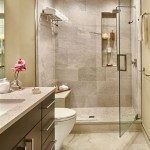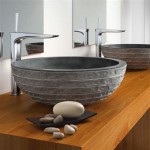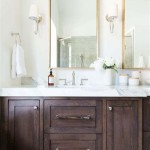How To Remove Yellowing From Bathroom Countertop
Bathroom countertops, particularly those made from materials like cultured marble, acrylic, or even certain types of quartz, can develop a yellowish tint over time. This discoloration is typically caused by a combination of factors, including prolonged exposure to ultraviolet (UV) light, mineral deposits from hard water, soap scum buildup, and the absorption of dyes from cosmetics or cleaning products. Understanding the specific cause of the yellowing is helpful in determining the most effective removal method. This article provides a comprehensive guide to addressing yellowing on bathroom countertops and restoring their original appearance.
Before attempting any cleaning method, it is essential to identify the countertop material. Cultured marble is a composite material made from crushed marble and resin. Acrylic countertops are synthetic and non-porous. Quartz countertops are engineered stone, combining natural quartz with resin binders. Granite countertops are a natural stone that are typically sealed. Each material reacts differently to various cleaning agents, and using the wrong product can cause further damage, etching, or dullness. Consulting the manufacturer's care instructions is always recommended.
Identifying the Cause of Yellowing
Determining the root cause of the yellowing is crucial for selecting the appropriate cleaning strategy. If the yellowing is more prevalent in areas exposed to direct sunlight, UV exposure is likely a significant contributor. Areas around the sink frequently exhibit yellowing due to mineral deposits from hard water and soap scum. Spills of colored liquids, such as hair dye or heavily pigmented soaps, can also stain the countertop. A thorough visual inspection of the affected area, combined with knowledge of past spills and cleaning practices, will help pinpoint the cause.
Once the cause is determined, targeted cleaning solutions can be considered. For UV-related yellowing, addressing natural light entering the bathroom is beneficial for preventing future discoloration. This can include installing window films that block UV rays, using blinds or curtains during peak sunlight hours, or applying a UV-resistant sealant to the countertop surface. For mineral deposits and soap scum, acidic cleaners such as diluted vinegar or commercially available limescale removers are effective. For dye stains, stronger solutions like hydrogen peroxide or specialized stain removers may be necessary.
Preventative measures are also very important in preventing yellowing. Wiping up spills immediately can prevent stains. Cleaning countertops regularly with appropriate cleaners can prevent the buildup of mineral deposits and soap scum. Using mats or trays beneath potentially staining products, such as hair dye or colored cosmetics, can minimize the risk of direct contact with the countertop surface.
Cleaning Methods for Different Countertop Materials
The cleaning method should be matched with the countertop material to avoid damage. Cultured marble is relatively delicate and can be scratched by abrasive cleaners. Acrylic countertops are more durable but can be damaged by harsh chemicals. Quartz countertops are highly resistant to staining but should still be cleaned with pH-neutral cleaners to maintain their shine. Granite countertops must be sealed to prevent staining. Testing any cleaning solution on an inconspicuous area before applying it to the entire surface is highly recommended.
For cultured marble, a gentle approach is best. Start with a mixture of warm water and mild dish soap. Apply the solution to the yellowed area with a soft cloth or sponge, and gently scrub in a circular motion. Rinse thoroughly with clean water and dry with a clean cloth. Avoid using abrasive scrubbers or cleansers, as these can scratch the surface and exacerbate the problem. For stubborn yellowing, a paste of baking soda and water can be applied for 15-20 minutes before rinsing.
Acrylic countertops can tolerate slightly stronger cleaning solutions. A mixture of equal parts white vinegar and water is effective for removing mineral deposits and soap scum. Apply the solution to the affected area, let it sit for a few minutes, and then scrub gently with a non-abrasive sponge. Rinse thoroughly with clean water and dry. Avoid using acetone or other harsh solvents, as these can damage the surface of the acrylic.
Quartz countertops are relatively easy to clean. For general cleaning, a mixture of warm water and mild dish soap is usually sufficient. For tougher stains, a commercially available quartz cleaner or a paste of baking soda and water can be used. Apply the cleaner to the stained area, let it sit for a few minutes, and then scrub gently with a non-abrasive sponge. Rinse thoroughly with clean water and dry. Avoid using abrasive cleaners or scouring pads, as these can dull the surface of the quartz.
Granite countertops should be cleaned regularly with a pH-neutral cleaner specifically designed for stone. This helps to maintain the sealant and prevent staining. Avoid using acidic or alkaline cleaners, as these can damage the sealant and etch the surface of the granite. For stains, a poultice made from baking soda and water or a specialized stain remover can be applied. Follow the instructions on the stain remover carefully. After cleaning, ensure that the countertop is properly sealed to prevent future staining.
Hydrogen peroxide is an effective cleaner for removing stubborn stains from some countertop materials, but it should be used with caution. It is best to test it on an inconspicuous area first to ensure that it does not damage the surface. Apply the hydrogen peroxide to the stained area, let it sit for several hours, and then rinse thoroughly with clean water. Repeat the process if necessary. For particularly stubborn stains, a paste of hydrogen peroxide and baking soda can be applied.
Specific Cleaning Solutions and Techniques
Several specific cleaning solutions and techniques can be used to target different types of yellowing. The effectiveness of these solutions depends on the material of the countertop and the severity of the yellowing.
Baking soda is a mild abrasive that can be used to gently scrub away stains and discoloration. It is safe for use on most countertop materials, including cultured marble, acrylic, and quartz. To use baking soda, mix it with water to form a paste. Apply the paste to the yellowed area and let it sit for 15-20 minutes. Then, scrub gently with a soft cloth or sponge and rinse thoroughly with clean water. Baking soda is particularly effective for removing soap scum and mineral deposits.
White vinegar is a natural acid that can dissolve mineral deposits and soap scum. It is safe for use on acrylic and quartz countertops, but should be used with caution on cultured marble, as it can etch the surface if left on for too long. To use white vinegar, mix it with water in a 1:1 ratio. Apply the solution to the yellowed area and let it sit for a few minutes. Then, scrub gently with a non-abrasive sponge and rinse thoroughly with clean water. Avoid using undiluted vinegar on cultured marble.
Hydrogen peroxide is a bleaching agent that can remove stubborn stains and discoloration. It is safe for use on white or light-colored countertops, but should be used with caution on darker countertops, as it can lighten the color. To use hydrogen peroxide, apply it directly to the stained area and let it sit for several hours. Then, rinse thoroughly with clean water. A paste of hydrogen peroxide and baking soda can be used for particularly stubborn stains.
Commercial cleaners specifically designed for bathroom countertops are also available. These cleaners typically contain a combination of detergents, solvents, and acids that can effectively remove stains and discoloration. Always follow the manufacturer's instructions when using commercial cleaners. Test the cleaner on an inconspicuous area before applying it to the entire surface to ensure that it does not damage the countertop.
For deep-set stains, a poultice can be used. A poultice is a paste-like mixture that is applied to the stained area and covered with plastic wrap. The poultice draws out the stain from the countertop. Common poultice ingredients include baking soda, hydrogen peroxide, and diatomaceous earth. Apply the poultice to the stained area, cover it with plastic wrap, and let it sit for 24-48 hours. Then, remove the plastic wrap and rinse thoroughly with clean water.
Regular cleaning and preventative measures are just as important as addressing existing yellowing. Wiping up spills promptly, using mats or trays for potentially staining products, and regularly cleaning the countertop with appropriate cleaners will help to prevent future discoloration. Applying a sealant to granite countertops will also help to protect them from stains.
In cases where the yellowing is severe and resistant to conventional cleaning methods, professional countertop restoration services may be necessary. These services typically involve polishing, refinishing, or resurfacing the countertop to remove the damaged layer and restore its original appearance. While this is a more expensive option, it can be a worthwhile investment for restoring valuable countertops that have been extensively damaged by yellowing.

Removing Yellow Stains From A White Countertop Remove Countertops Laminate

How To Remove Yellow Stains On Quartz Countertop Kitchen Cabinet

Removing Yellow Stains From A White Countertop Hometalk

How To Remove Stains From Cultured Marble Sinks And Shower Surrounds Ep 80

Easy Budget Sink Update Momhomeguide Com

How To Remove Yellow Stains On Quartz Countertop Kitchen Cabinet

How To Remove Surface Etched Stains From Concrete Countertops

How To Refinish Bathroom Vanity Top With Diy Resin Thediyplan

Removing Yellow Stains From A White Countertop Hometalk

How To Clean Yellow Stains On White Marble Floors Slique
Related Posts
